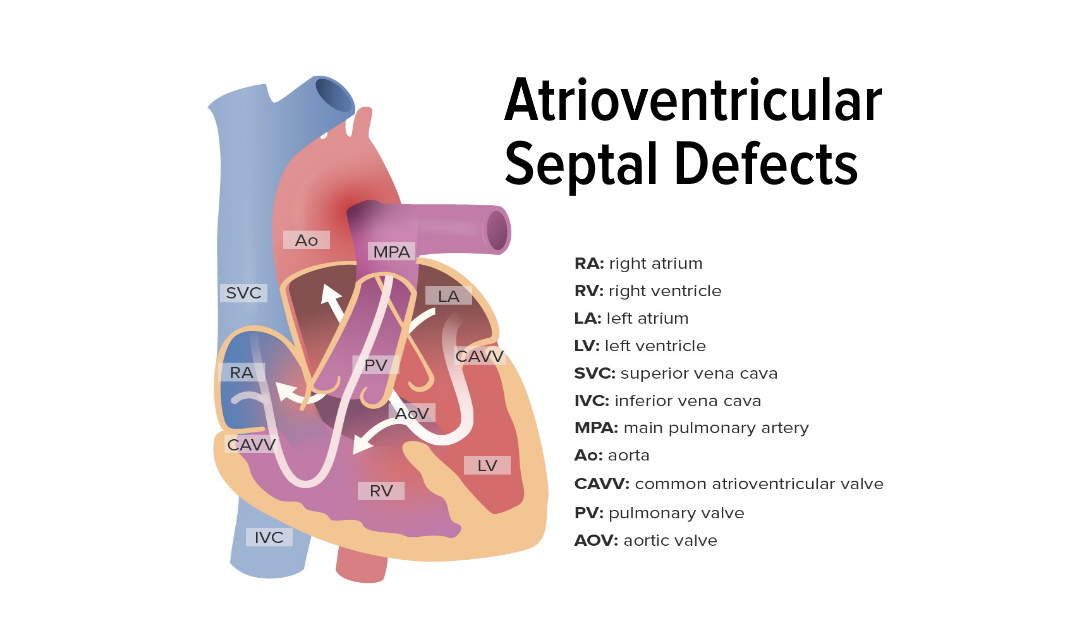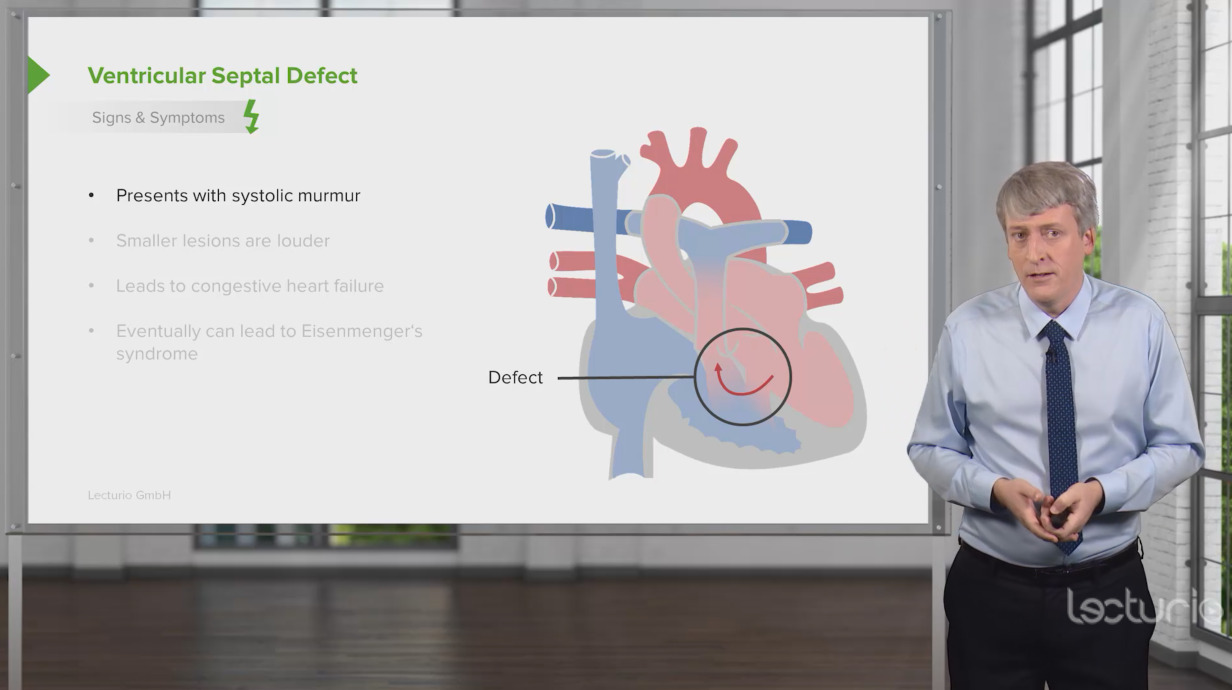Playlist
Show Playlist
Hide Playlist
Ventricular Septal Defect (VSD)
-
Slides Obstructive heart disease and detour defects.pdf
-
Reference List Pediatric Nursing.pdf
-
Download Lecture Overview
00:01 This is absolutely the most common congenital heart defect, and that's a point of emphasis right there. 00:08 The most common congenital heart defect is the VSD. 00:12 This is simply a hole connecting the left and right ventricles. 00:18 There are many different types of VSDs and it depends on where in the septum this little hole is. 00:24 We have membranous VSDs that's about 75 percent of cases, that's just right through the membrane. 00:31 Muscular VSDs. 00:32 You may have a common AV Canal - we'll talk about that as a special case in a little bit. 00:38 Or you may have a septum in the outlet between the aorta and the pulmonary artery. 00:45 Generally, because the left side is higher pressures supplying those very high pressures to the body, the mixing lesions is going left to right. 00:55 In patients with a VSD, often you'll hear a murmur. 00:59 There's a couple of tricks to this murmur that you might not think of. 01:04 Remember, the pitch of a murmur have to do with the size of the hole it goes through. 01:10 Just like an organ, a very large pipe makes a low note. 01:13 A very large VSD makes a lower pitched murmur than a very small VSD. 01:19 They tend to be very loud when they're smaller because it's a very turbulent jet of blood cruising right through from the left to the right. 01:28 These small VSDs will be high-pitched, very loud murmurs. 01:33 This will eventually lead to congestive heart failure. 01:39 The larger the lesion, the more likely you're going to end up in congestive heart failure. 01:44 Those large lesions may have almost no murmur at all if it's the entire ventricle and it would be very low-pitched. 01:51 Those can be sometimes tricky to hear. 01:54 If these are left untreated, they can eventually lead to Eisenmenger's. 01:59 Here on your slide, you can see a picture of a child with typical clubbing of the fingernails. 02:05 This child has pulmonary disease from continuous overcirculation of their blood into the right side through their VSD. 02:14 Eisenmenger's is when that right side is now higher pressure than the left - blood is now going right to left. 02:21 This sort of patient would require a heart transplant and maybe even a heart-lung transplant if the lungs are bad enough. 02:29 A VSD is repaired fortunately in most cases by itself. 02:35 Many of these muscular and small defects will close on their own. 02:38 So, if it's a very small defect, it's likely not causing too much trouble for the child, keep an eye on that child. 02:44 Symptomatic patients will be treated with medications. 02:48 Probably the most common medication we see used is Lasix or furosemide. 02:54 Furosemide allows those lungs to diurese a little bit and have a little bit less wetness which allows the breathing to be a little bit easier. 03:04 Surgical repair is required in some of these children with very severe VSDs. 03:09 Usually happens in the first year of life, they place a patch or sometimes, they'll have to do an open repair. 03:16 That can be critical to ending this mixing which is really the primary problem. 03:22 Let's look at the worst VSD that you can imagine and that is both the VSD and an ASD and we call this the common A-V canal or endocardial cushion defect. 03:35 These patients are symptomatic very early. 03:39 If you imagine, the heart is really just one big turbulent chamber of blood with mixing, These patients will often be cyanotic. 03:48 Surgical correction is obviously needed. 03:51 We need to rebuild these various septums, so that this child is capable of keeping the two sides of his heart apart. 03:58 And what is a high yield fact on this one is that the most common defect in patients with Down syndrome is the common A-V canal Remember, the most common defect overall in congenital heart disease is the VSD, but the most common defect in patients with Down syndrome is the common A-V canal.
About the Lecture
The lecture Ventricular Septal Defect (VSD) by Brian Alverson, MD is from the course Pediatric Cardiology.
Included Quiz Questions
What is the most common type of VSD?
- Membranous
- Muscular
- Common AV canal
- Outlet septum
- Endocardial cushion defect
What is the most common congenital heart disease in patient's with Down syndrome?
- Atrioventricular septal defect
- Aortic coarctation
- Tetrology of Fallot
- Tricuspid atresia
- Pulmonary stenosis
Customer reviews
5,0 of 5 stars
| 5 Stars |
|
2 |
| 4 Stars |
|
0 |
| 3 Stars |
|
0 |
| 2 Stars |
|
0 |
| 1 Star |
|
0 |
This lecture made once again a complex topic seems a simpler one. I understand the teacher removes as many numbers as possible and I appreciate it. However, I would have like for this chapter a bit more statistics regarding prevalence. Thank you!
Helped clarify my understanding and simplified concepts without affecting quality of content.






